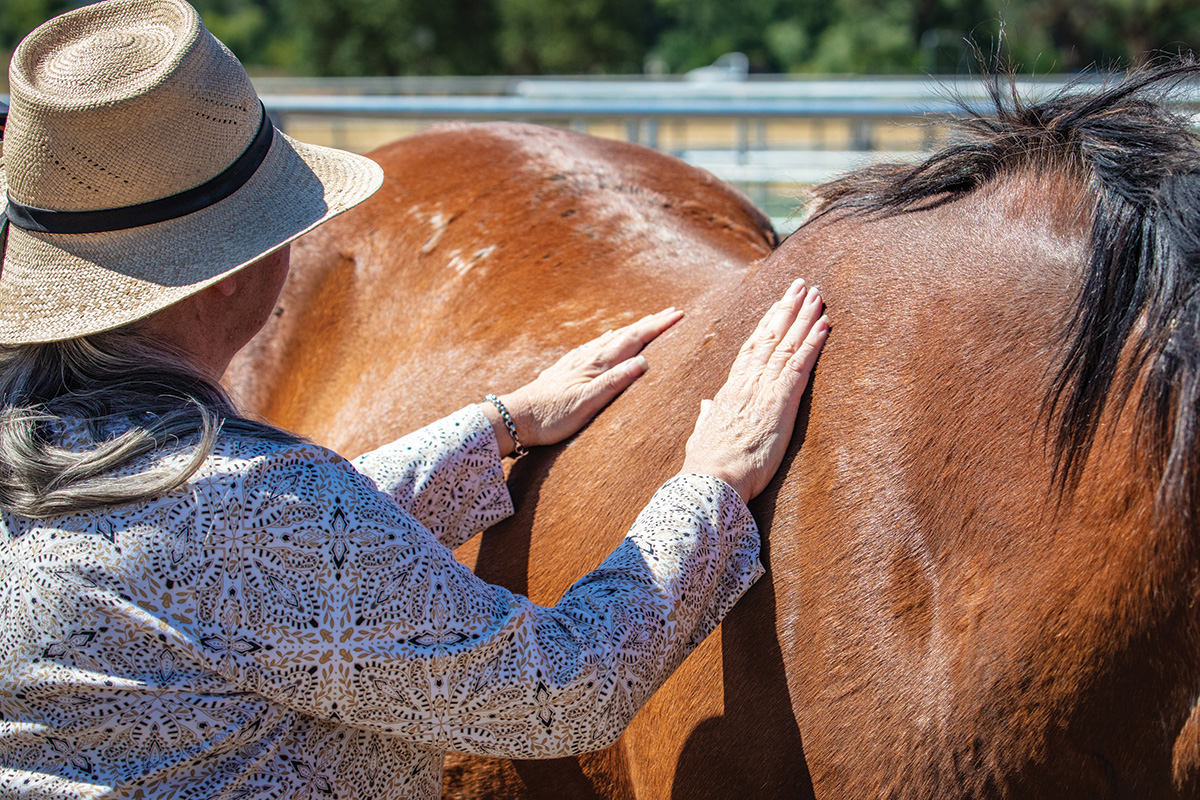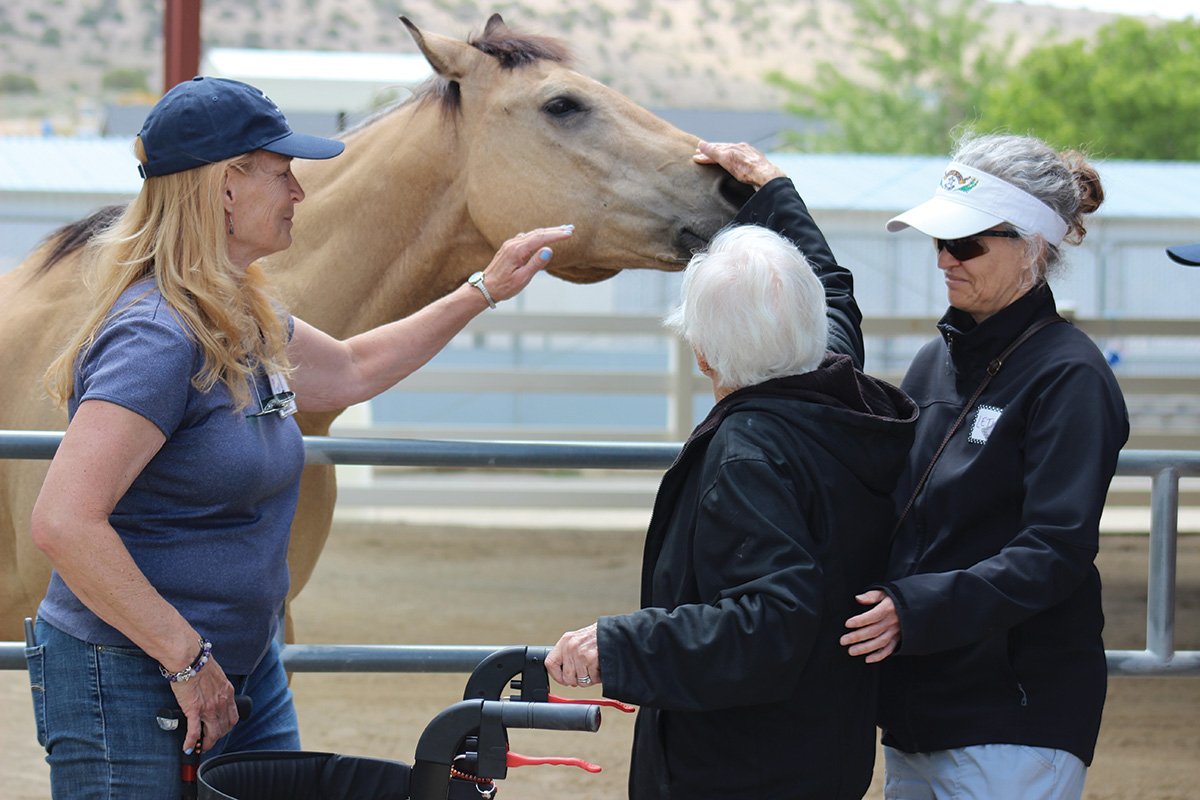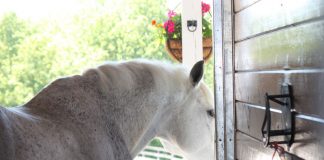
Tom Mannigel didn’t know much about horses until his wife, Diane, was diagnosed with Alzheimer’s disease. Thanks to an equine-assisted therapy program offered at a nearby PATH-certified facility (Professional Association of Therapeutic Horsemanship International), he now knows first-hand that horses can be valuable collaborators when it comes to meeting stress and depression head on, as well as improving the pair’s relationship.
Innovative Programs
The Mannigels took part in the Kids and Horses PATH program in Minden, Nev.
PATH-certified facilities, instructors and other professionals use equine-assisted therapies geared toward individuals who have special needs. Recently, programming at some PATH-certified facilities has diversified to include equine-assisted therapies for veterans and others coping with post traumatic stress disorder (PTSD).
Kids and Horses is just one of the PATH- sanctioned facilities that uses a program developed by Connected Horse to help individuals and their caregivers navigate the physical flood of emotions connected to the diagnosis of Alzheimer’s disease or other dementias.
“I was intrigued,” says Cat O’Brien, Kids and Horses program director and a PATH-certified instructor. “I live in a community of retirees, and I believed it would be an asset to our facility.”
According to Connected Horse co-founder Paula Hertel, MSW, combining the two programs has turned out to be a perfect fit.
“There is a mission alignment with many PATH barns and Connected Horse: We believe the horse/human connection provides benefits to both horse and participant,” says Hertel. “We are advocating that Connected Horse is ideal for people with dementia because it doesn’t require traditional verbal communication.”
According to Hertel, the Connected Horse program focuses on mindfulness, emotional and sensory triggers, and understanding. Horses used in the program allow the person diagnosed with dementia and their caregiver all communicate on the same level.
“The horse is really the teacher,” she says.
Benefits for Caregivers
The horses had a profound impact on caregivers as well, as Hertel and co-founder Nancy Schier Anzelmo discovered in their program-connected research.
“Care partners often experience feelings of being overwhelmed, anxious, depressed and frustrated with the situation in which they find themselves,” Schier Anzelmo explains. “The Connected Horse program helps the care partner and the person who has been diagnosed with the grief and depression that comes after an initial diagnosis.”
In fact, those were exactly the emotions that swept over Leticia Metherell when her mother Maria Murguido was diagnosed with Alzheimer’s disease in 2017.
“I don’t know if you would call it depression, but there was a deep concern of losing my mother and the impacts this [diagnosis] would have on my family,” recalls Metherell. Along with her mother, she took part in the Connected Horse program offered by Kids and Horses in June and July of 2022. “Also, perhaps a selfish part of me thought about my risks of getting Alzheimer’s and what impact her diagnosis would have on my life.”

In order to cope with her own feelings and those her parents were experiencing, Metherell scoured the internet for something that would provide meaningful activities for the pair. She came upon the Kids and Horses program during one of those searches.
“I was skeptical when I first attended the sessions because I didn’t think they were going to make a long-term impact,” she says. “I don’t think I really had a true understanding until I attended the program and experienced it for myself.”
But she discovered that the horses taught the humans important things about communication and connection.
“There definitely is a form of communication happening between people and horses [that is] influenced by our own moods, body posture, attentiveness, and tone of voice,” says Metherell. “The horses also communicate with us via their responses, whether they come to you, walk by your side of their own accord, or allow you to groom them. This is such an important lesson, because as the ability of my mother to communicate reduces as her disease progresses, these lessons help me understand that there will always be a connection there, and that a verbal interaction is not always necessary for it to be a deep and meaningful interaction.”
Physical Benefits for Patients
The PATH/Connected Horse synergy has physical benefits, too, says Tineke Jacobson, a physical therapist, PATH-registered therapist and hippotherapy clinical specialist at the Xenophon Therapeutic Riding Center in Orinda, Calif.
Jacobson found the Connected Horse program in 2018 while searching for a program that was using horses to assist in the treatment of dementia.
“There was a growing interest in serving adults in our community when it became apparent that horses have exceptional talents with unmounted activities,” she explains.
The Connected Horse program was a good fit for Xenophon, which already offered equine-assisted physical and occupational programs for children and adults.
Jacobson credits working with horses not only with an ability to emotionally lift people out of a depressed state, but she says that the physical benefits of the interactions between humans and horses are just as profound.
She remembers one person who took part in the Connected Horse program at Xenophon.
“His gait was characterized by slumped-over posture, looking at the ground, short stride length—all signs of decline due to aging, depression and maybe also dementia,” Jacobson recalls. “When he was given the lead rope to walk with the horse, the horse did not respond to his cues of a verbal ‘walk on.’ Only when he straightened up, looked ahead, and made a large, decisive stride after a deep inhale to expressively say ‘walk on,’ did the horse respond and walk with him wherever he wanted to go.”
Lowering Alzheimer’s Disease Risk FactorsAccording to gerontologists, someone in the U.S. is diagnosed with Alzheimer’s disease or a related dementia every 65 seconds. Fortunately, there are things you can do now to help stave off a dementia diagnosis in later life, according to gerontologist Paula Hertel, co-founder of the Connected Horse program. “Research shows that 40 percent of dementia can be avoided by focusing on risk factors,” she says. Here’s what you can do: ◆ Stay physically active and consistent with exercise and light weight-training. ◆ Practice mindfulness and meditation techniques to avoid depression or cope with it when it does occur. “If untreated, depression is a potential risk factor for dementia in later life,” says Hertel. ◆ Practice using physical senses, including touch, smell and hearing in every human/equine interaction. “We often say, ‘Get out of your head and into your senses,’” she says. ◆ Use riding time to notice and fully appreciate nature, either on the trail or at the barn. Finally, the same techniques can help when it’s time to cope with any life-changing experience, whether a cancer diagnosis, a financial snarl or the death of someone close to you. “Just being with the unconditional acceptance of the horses can be helpful,” says Hertel. “Horses live in the moment, and they can teach you how wonderful that can be.” |
The Impact of Equine-Assisted Therapy
Whether its impact is physical or emotional, Metherell says that she will never forget what she learned from the horses at a very difficult time in her life and in the lives of her mother, father and other members of their family.
“Working with horses has helped bring me an emotional awareness, which helps deal with stress and feelings of sadness,” says Metherell. “[This helps me] better understand nonverbal communication and find gratitude in my life. It’s also a shared experience that [my mother and I] can both fall back on when times are hard, and reminds us each day of all the things we have to be grateful for.”
Mannigel agrees.
“I really can’t explain it, but [my relationship with my wife] has changed,” he says. “I don’t know if she’s less anxious because I’m less stressed or if I have less stress because she’s less anxious. All I know is that since we [worked] with the horses, our relationship is better.”
This article about equine-assisted therapy helping Alzheimer’s disease patients appeared in the November/December 2022 issue of Horse Illustrated magazine. Click here to subscribe!





